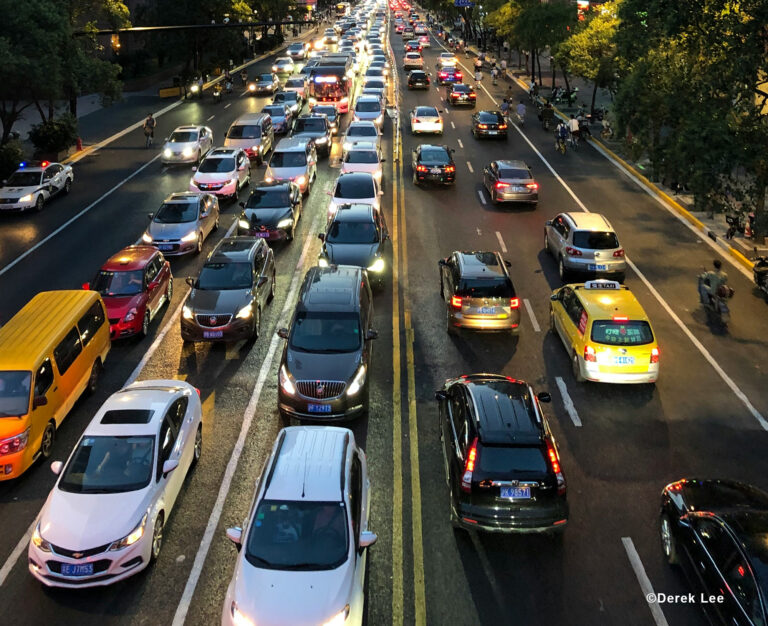Let the market decide the
right number of parking spots
By Kenneth Schrupp | April 5, 2024
First published in 2005, David Shoup’s “The High Cost of Free Parking” is, after nearly two decades, driving a national reconsideration of parking minimums. But while some cities from Austin to San Jose are eliminating unreasonable parking minimums, others are now enforcing parking maximums, thus erasing a vital transportation option for those whose needs cannot be met via public transit.
Through a war on the perceived needs of wealthier urbanites – namely, the “evil” desire to drive and park a car – modern urbanists are pursuing a zero-car future that neglects the transportation needs of a working class that requires the mobility and carrying capacity that only a car can provide. By eliminating parking minimums and also refusing to advance unnecessary parking maximums, we can protect transportation options while improving housing affordability and commercial opportunities for all.
Parking minimums fostered urban blight by requiring vast amounts of would-be commercial and residential space to be covered in asphalt, hollowing out downtowns and substantially increasing costs for businesses and residents alike. Deprived of residents, downtowns across America were hollowed out into 9-to-5 ghost towns, coming alive for a few hours each day before descending into sleepy chaos and dominance by undesirable elements at night.
Eliminating parking minimums – as California did in 2022, with a new law banning localities from imposing them – would thus have the twofold outcome of decreasing real-estate costs in high-demand areas and increasing full-time use of highly capital intensive downtowns and the associated public infrastructure.
With the cost of constructing an underground parking space in California approximately $80,000, parking is one of the highest costs developers face. Eliminating parking minimums will allow developers to build as many parking spaces as their tenants and users need. It is a sensible, level-headed, market-based option for reducing up-front development costs and improving the speed and ease of development.
But in typical activist fashion, urbanists’ hard-won victory against parking minimum is evolving into a tyrannical bid to eliminate driving as an option, perhaps demonstrating that the motivation of many anti-parking requirement activists was born of hatred of cars more than the love of practical development solutions that can create safer, more vibrant downtowns.
Take, for example, California’s much-vaunted “Affordable Housing on Faith and Higher Education Lands Act of 2023,” also known as “Yes In God’s Backyard,” or YIGBY. The measure enables faith-based organizations and nonprofit colleges to quickly develop housing on their land, but with significant stipulations. Most of the units must be “affordable” for lower-income households, meaning that the units essentially come with strict price controls.

Though this may not appear to be a problem for nonprofits, the funding for these projects tends to come from private, for-profit investors. This requirement will reduce the overall capital these projects can attract. Nonetheless, the 170,000 acres of identified under-utilized land owned by nonprofit colleges and faith organizations being open to additional development makes for a meaningful step forward in helping meet the state’s 4.5-million-unit housing shortage.
However, the dual mandate of eliminating parking requirements within half a mile of public transit while also imposing a maximum parking limitation of one space per unit on any YIGBY development significantly impedes mobility and economic opportunity for the lower-income residents the homes are meant to serve.
It’s well-established that lower-income neighborhoods have the highest concentration of hyper-commuters who must commute 90 minutes or more each way to work. Those with lower incomes commute much farther from their jobs than wealthy people who can afford to live near where they work. People who work in trade or service industries such as construction, plumbing or even housekeeping or landscaping may have variable job sites that often are not served by public transit, meaning a car is the only way to get from home to work.
Not everyone is able to go to work with just a laptop.
Millions of Americans require tools of the trade for work that cannot be carried on public transit. Can a landscaper be expected to take a lawnmower on the bus? Should a plumber be expected to take a rooter on the train? Why should the millions of Americans working with their hands or for their own small business be denied access to the only transportation option that gives them the freedom to live and work as they please?
Kenneth Schrupp is the California reporter for The Center Square. His commentary and analysis have been published by Newsweek and RealClearPolitics.
